From the Trenches
Not So Pearly Whites
By MARLEY BROWN
Monday, June 12, 2017
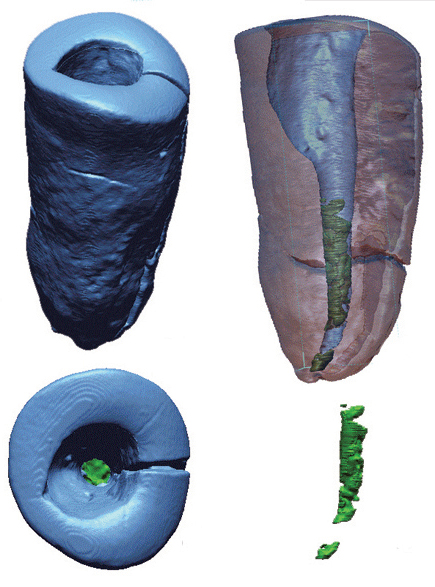 Researchers working near Lucca in northern Italy have found the oldest example of the practice of filling dental cavities, according to Stefano Benazzi of the University of Bologna. Using microscopic techniques, Benazzi and his team determined that two 13,000-year-old front teeth that belonged to a late Pleistocene hunter-gatherer were manipulated with a handheld tool. The Ice Age dentist drilled to remove decaying material within the pulp chambers of the teeth and replaced it with a natural antiseptic paste containing bitumen, vegetal fibers, and hair. This new evidence suggests a more sophisticated technology than previous markings that Benazzi and his colleagues found in teeth from another site in Italy, dated a thousand years earlier. Those teeth are believed to be the first known evidence of human dentistry.
Researchers working near Lucca in northern Italy have found the oldest example of the practice of filling dental cavities, according to Stefano Benazzi of the University of Bologna. Using microscopic techniques, Benazzi and his team determined that two 13,000-year-old front teeth that belonged to a late Pleistocene hunter-gatherer were manipulated with a handheld tool. The Ice Age dentist drilled to remove decaying material within the pulp chambers of the teeth and replaced it with a natural antiseptic paste containing bitumen, vegetal fibers, and hair. This new evidence suggests a more sophisticated technology than previous markings that Benazzi and his colleagues found in teeth from another site in Italy, dated a thousand years earlier. Those teeth are believed to be the first known evidence of human dentistry.
Tomb Couture
By DANIEL WEISS
Monday, June 12, 2017
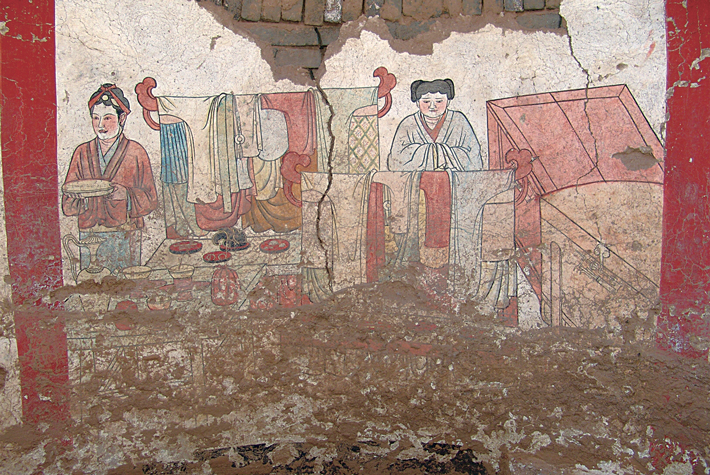
Archaeologists in the northern Chinese city of Datong have completed excavations of a circular tomb dating to the Liao Dynasty (A.D. 907–1125) believed to belong to a husband and wife. An urn with cremated human remains was found in the middle of the tomb. The tomb’s walls feature four vividly colored mural panels that depict cranes, servants, and many articles of dress. The degree of preservation has impressed researchers. In the mural on the west wall, garments colored sky-blue, beige, bluish-gray, yellowish-brown, and pink hang from two clothing stands. One item has a green diamond pattern, with a small red flower that can still be made out at the middle of each diamond.
Renaissance Melody
By ERIC A. POWELL
Monday, June 12, 2017
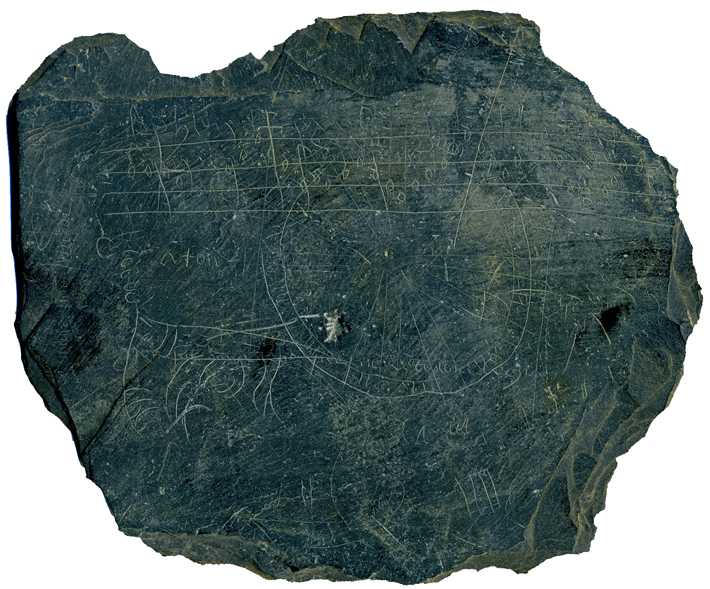 Seldom, if ever, do artifacts allow us to experience what people heard in the distant past. But a team excavating at the medieval Convent of the Jacobins in Rennes, France, recently made a discovery that brings to life a short snatch of a song that was last sung by monks in the sixteenth century. Beneath the convent’s refectory, the team found a number of schist plaques inscribed with casual etchings, including caricatures of people, medieval versions of the game of hopscotch, and personal names. Among them was an etching of four lines of diamond shapes that the archaeologists quickly recognized were musical notes representing a short melody of a plainchant, or an unaccompanied sacred song. “It’s very difficult to know just what kind of song the notes record,” says Gaëtan Le Cloirec of the National Institute of Preventive Archaeological Research, who led the excavation. “It’s probably a short religious song that was engraved by a Dominican monk as an exercise.” Click below to hear ancient music specialist and soprano Dominique Fontaine sing the melody.
Seldom, if ever, do artifacts allow us to experience what people heard in the distant past. But a team excavating at the medieval Convent of the Jacobins in Rennes, France, recently made a discovery that brings to life a short snatch of a song that was last sung by monks in the sixteenth century. Beneath the convent’s refectory, the team found a number of schist plaques inscribed with casual etchings, including caricatures of people, medieval versions of the game of hopscotch, and personal names. Among them was an etching of four lines of diamond shapes that the archaeologists quickly recognized were musical notes representing a short melody of a plainchant, or an unaccompanied sacred song. “It’s very difficult to know just what kind of song the notes record,” says Gaëtan Le Cloirec of the National Institute of Preventive Archaeological Research, who led the excavation. “It’s probably a short religious song that was engraved by a Dominican monk as an exercise.” Click below to hear ancient music specialist and soprano Dominique Fontaine sing the melody.
Take Me Out to the Ball Game
By JASON URBANUS
Monday, June 12, 2017
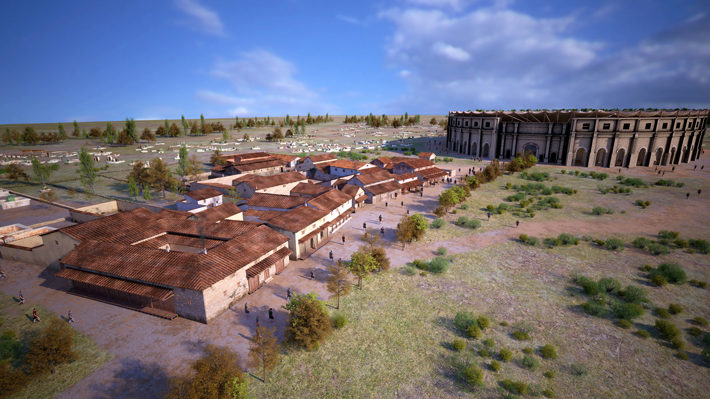
Today, urban sports arenas are often surrounded by restaurants, bars, and souvenir shops where crowds of people gather before and after an event. New research outside the amphitheater in the Roman city of Carnuntum suggests that the same was true 2,000 years ago. Located east of Vienna, Carnuntum was once one of the largest cities in the Roman Empire, although much of it is unexcavated and hidden from view. Over the past several years, Austrian archaeologists have been using high-resolution magnetometers and ground-penetrating radar to analyze the ancient city’s topography. A recent investigation detected an entire “entertainment district” surrounding Carnuntum’s suburban amphitheater. The scans revealed that the street leading to the amphitheater from the city was lined with an array of inns, shops, bakeries, and Roman “fast food” restaurants (thermopolia) that would have catered to the large crowds attending gladiatorial contests.
House Rules
By MARLEY BROWN
Monday, June 12, 2017
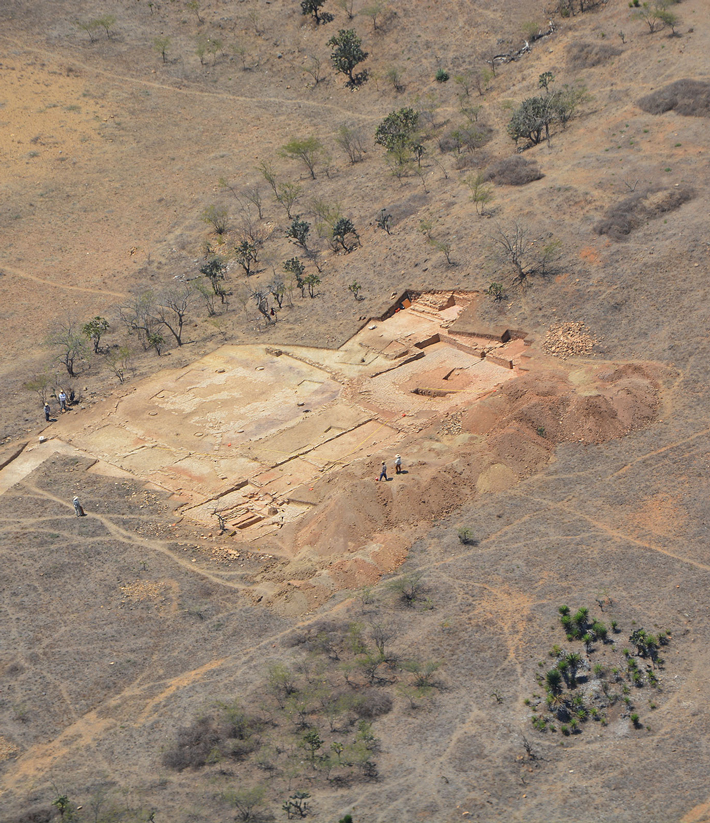 The excavations of a royal palace complex within the site of El Palenque in Mexico’s Oaxaca Valley may provide evidence for one of the earliest central governments in the Americas, according to archaeologists Elsa Redmond and Charles Spencer of the American Museum of Natural History. The complex dates to between 300 and 100 B.C. and contains a multiuse building with a sophisticated water management system, a grand private residence, dining facilities, rooms for official functions, and ritual spaces. Radiocarbon samples and ceramics confirm the dating of the palace to a time when states associated with the Zapotec civilization were emerging in the region. To guide the research, the team studied later colonial descriptions of Aztec royal palaces. “We would not expect all the architectural details of a late Postclassic or early colonial period Aztec palace in the basin of Mexico to be the same in prehistoric Zapotec palaces,” Redmond says. “But there are some common aspects of a centralized, hierarchical, and differentiated state administration that might be present in all royal palaces of different time periods.”
The excavations of a royal palace complex within the site of El Palenque in Mexico’s Oaxaca Valley may provide evidence for one of the earliest central governments in the Americas, according to archaeologists Elsa Redmond and Charles Spencer of the American Museum of Natural History. The complex dates to between 300 and 100 B.C. and contains a multiuse building with a sophisticated water management system, a grand private residence, dining facilities, rooms for official functions, and ritual spaces. Radiocarbon samples and ceramics confirm the dating of the palace to a time when states associated with the Zapotec civilization were emerging in the region. To guide the research, the team studied later colonial descriptions of Aztec royal palaces. “We would not expect all the architectural details of a late Postclassic or early colonial period Aztec palace in the basin of Mexico to be the same in prehistoric Zapotec palaces,” Redmond says. “But there are some common aspects of a centralized, hierarchical, and differentiated state administration that might be present in all royal palaces of different time periods.”
Advertisement
Advertisement
IN THIS ISSUE
From the Trenches
Ka-Ching!
Off the Grid
While You Are Waiting
A Dangerous Island
House Rules
Renaissance Melody
Take Me Out to the Ball Game
Tomb Couture
Not So Pearly Whites
Late Paleolithic Masterpieces
Afterlife on the Nile
Knight Watch
The Grand Army Diet
Angry Birds
World Roundup
First World War booze, Russian bear grease, Mediterranean mystery religion, and exploring under Algiers
Artifact
A venerable bead
Advertisement

Recent Issues
-
 May/June 2024
May/June 2024
-
 March/April 2024
March/April 2024
-
 January/February 2024
January/February 2024
-
 November/December 2023
November/December 2023
-
 September/October 2023
September/October 2023
-
 July/August 2023
July/August 2023
-
 May/June 2023
May/June 2023
-
 March/April 2023
March/April 2023
-
 January/February 2023
January/February 2023
-
 November/December 2022
November/December 2022
-
 September/October 2022
September/October 2022
-
 July/August 2022
July/August 2022
-
 May/June 2022
May/June 2022
-
 March/April 2022
March/April 2022
-
 January/February 2022
January/February 2022
-
 November/December 2021
November/December 2021
-
 September/October 2021
September/October 2021
-
 July/August 2021
July/August 2021
-
 May/June 2021
May/June 2021
-
 March/April 2021
March/April 2021
-
 January/February 2021
January/February 2021
-
 November/December 2020
November/December 2020
-
 September/October 2020
September/October 2020
-
 July/August 2020
July/August 2020
-
 May/June 2020
May/June 2020
-
 March/April 2020
March/April 2020
-
 January/February 2020
January/February 2020
-
 November/December 2019
November/December 2019
-
 September/October 2019
September/October 2019
-
 July/August 2019
July/August 2019
-
 May/June 2019
May/June 2019
-
 March/April 2019
March/April 2019
-
 January/February 2019
January/February 2019
-
 November/December 2018
November/December 2018
-
 September/October 2018
September/October 2018
-
 July/August 2018
July/August 2018
-
 May/June 2018
May/June 2018
-
 March/April 2018
March/April 2018
-
 January/February 2018
January/February 2018
-
 November/December 2017
November/December 2017
-
 September/October 2017
September/October 2017
-
 July/August 2017
July/August 2017
-
 May/June 2017
May/June 2017
-
 March/April 2017
March/April 2017
-
 January/February 2017
January/February 2017
-
 November/December 2016
November/December 2016
-
 September/October 2016
September/October 2016
-
 July/August 2016
July/August 2016
-
 May/June 2016
May/June 2016
-
 March/April 2016
March/April 2016
-
 January/February 2016
January/February 2016
-
 November/December 2015
November/December 2015
-
 September/October 2015
September/October 2015
-
 July/August 2015
July/August 2015
-
 May/June 2015
May/June 2015
-
 March/April 2015
March/April 2015
-
 January/February 2015
January/February 2015
-
 November/December 2014
November/December 2014
-
 September/October 2014
September/October 2014
-
 July/August 2014
July/August 2014
-
 May/June 2014
May/June 2014
-
 March/April 2014
March/April 2014
-
 January/February 2014
January/February 2014
-
 November/December 2013
November/December 2013
-
 September/October 2013
September/October 2013
-
 July/August 2013
July/August 2013
-
 May/June 2013
May/June 2013
-
 March/April 2013
March/April 2013
-
 January/February 2013
January/February 2013
-
 November/December 2012
November/December 2012
-
 September/October 2012
September/October 2012
-
 July/August 2012
July/August 2012
-
 May/June 2012
May/June 2012
-
 March/April 2012
March/April 2012
-
 January/February 2012
January/February 2012
-
 November/December 2011
November/December 2011
-
 September/October 2011
September/October 2011
-
 July/August 2011
July/August 2011
-
 May/June 2011
May/June 2011
-
 March/April 2011
March/April 2011
-
 January/February 2011
January/February 2011
Advertisement






